Abstract
The effect of vaginal tampons on the microbial flora during menstruation has recently been studied by several investigators. However, little information regarding the qualitative effects attributable to particular tampon fibers is available. The purpose of the present study was to compare the effects of polyacrylate rayon tampons and cotton-viscose rayon blend tampons on the qualitative bacterial counts obtained from tampons and concomitant vaginal swabs and to determine whether either of these tampon types alters the qualitative makeup of the vaginal microflora when compared with the microflora in the same women using all-cotton tampons or external catamenial pads. Tampon and swab samples were obtained as described previously (A. B. Onderdonk, G. R. Zamarchi, M. L. Rodriguez, M. L. Hirsch, A. Muñoz, and E. H. Kass, Appl. Environ. Microbiol. 53:2774-2778). The genus and species of the six dominant bacterial species in each sample were identified, if possible. A statistical evaluation of the qualitative makeup of the microflora revealed that the same numerically dominant phenotypes were present regardless of sample type, sample time, or catamenial product. Predictable changes in total numbers among the dominant species were also noted when the data were evaluated by day of menstrual cycle. The correlation between the total numbers of each dominant species present was evaluated by day of cycle, and the findings are discussed.
Full text
PDF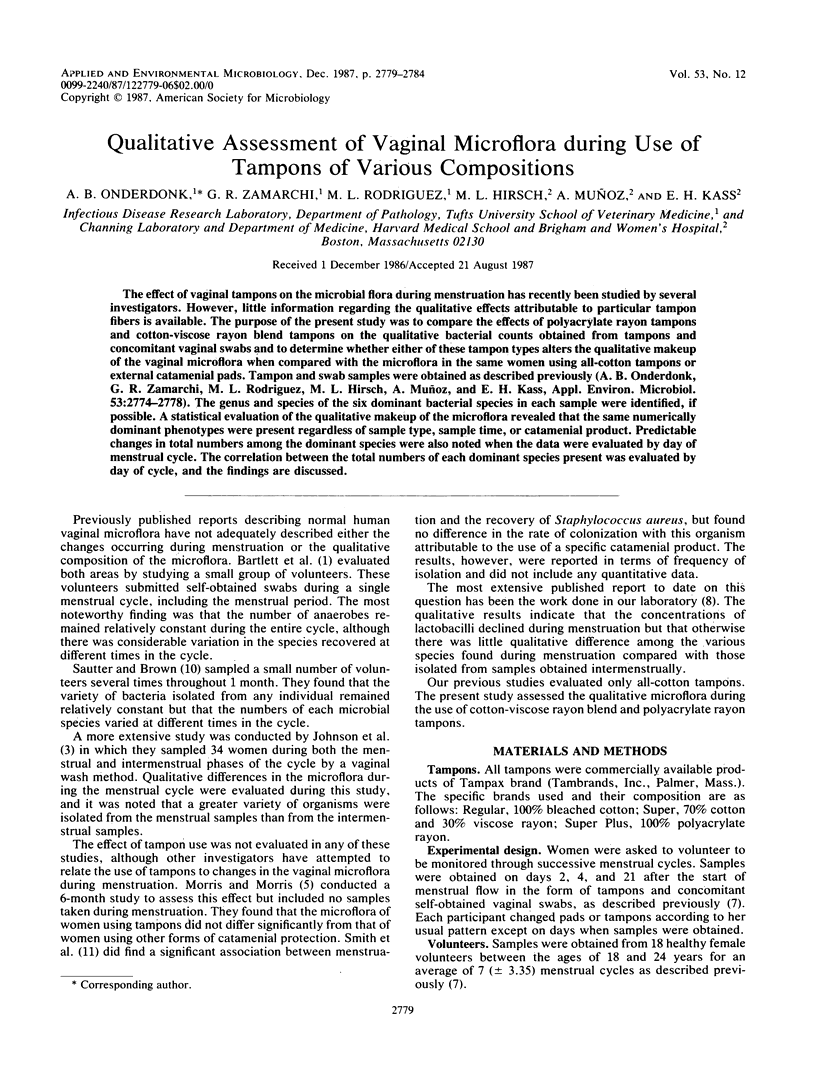
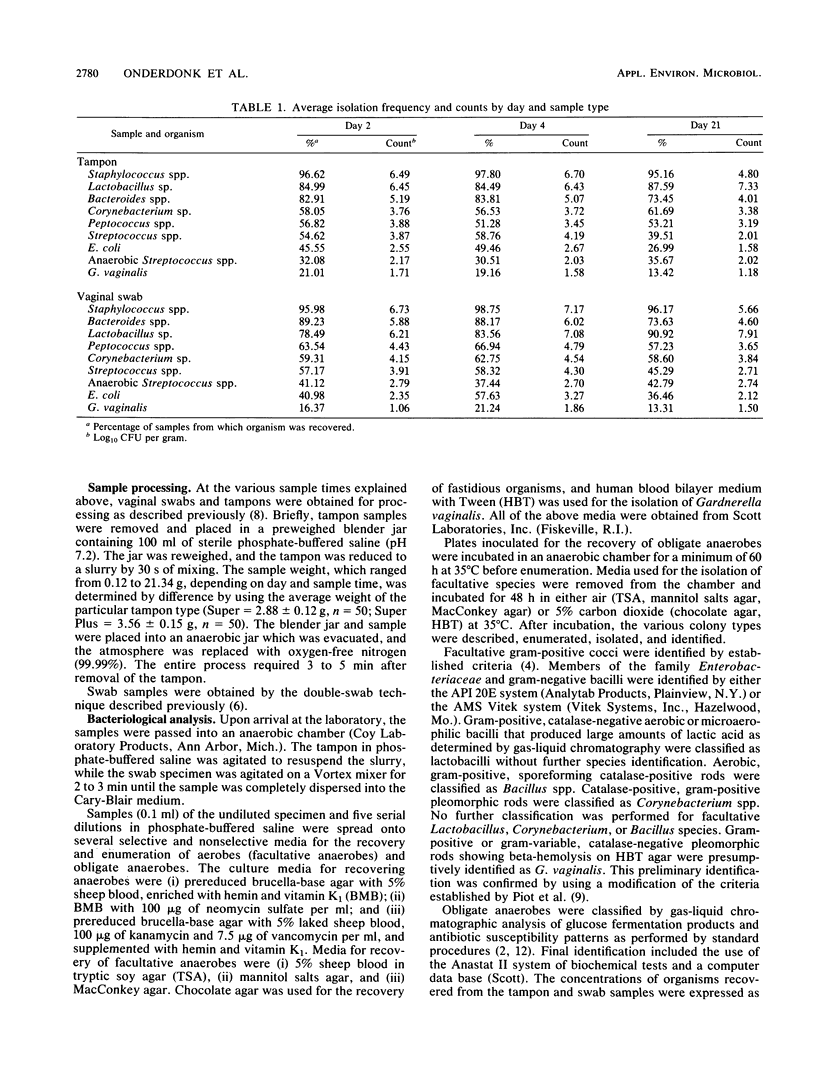
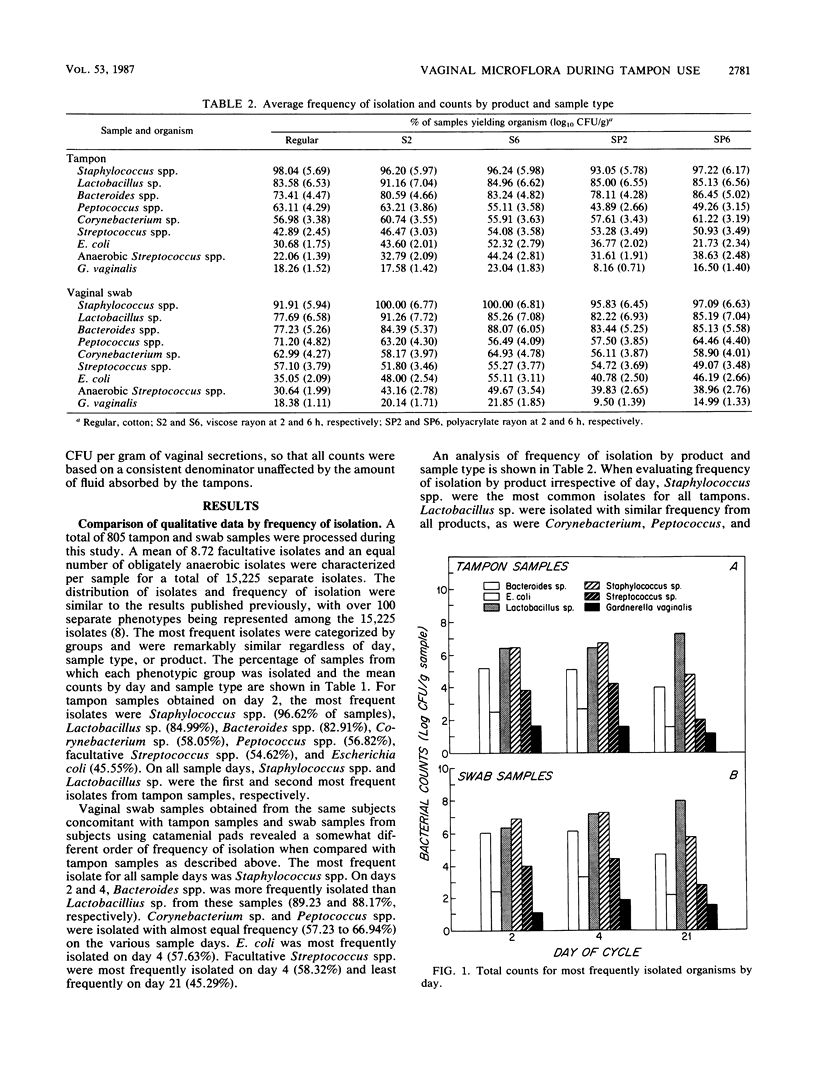
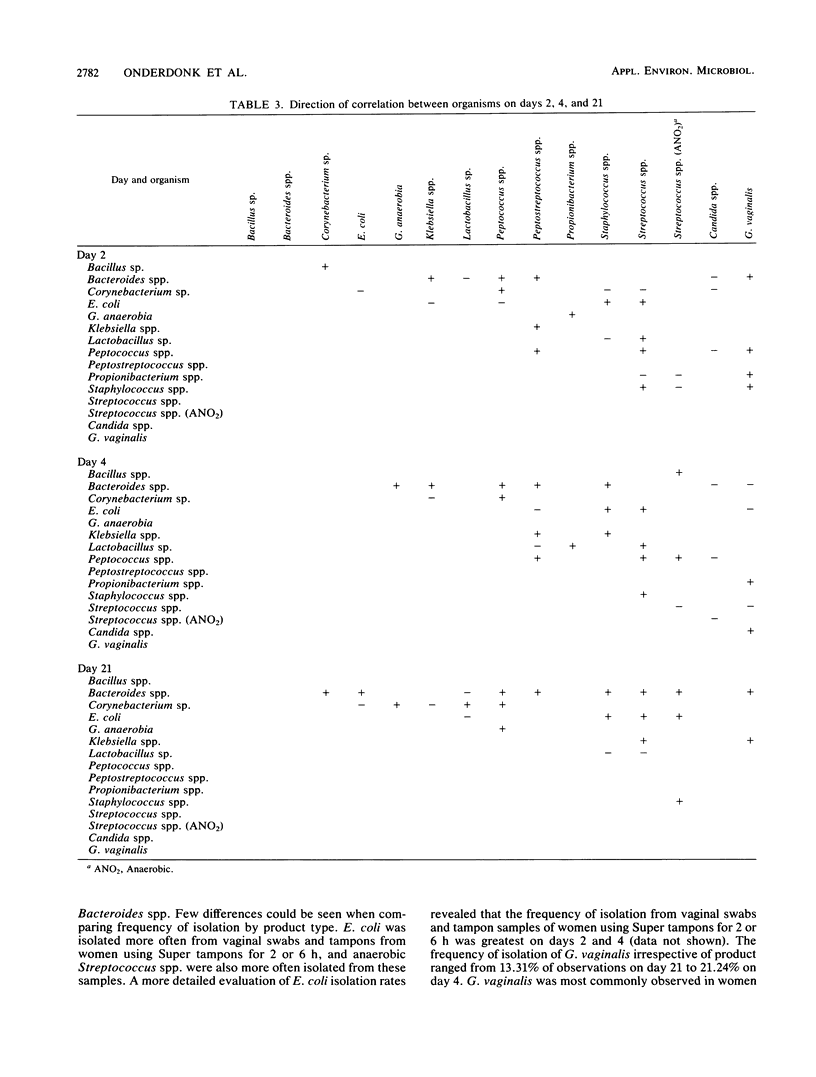
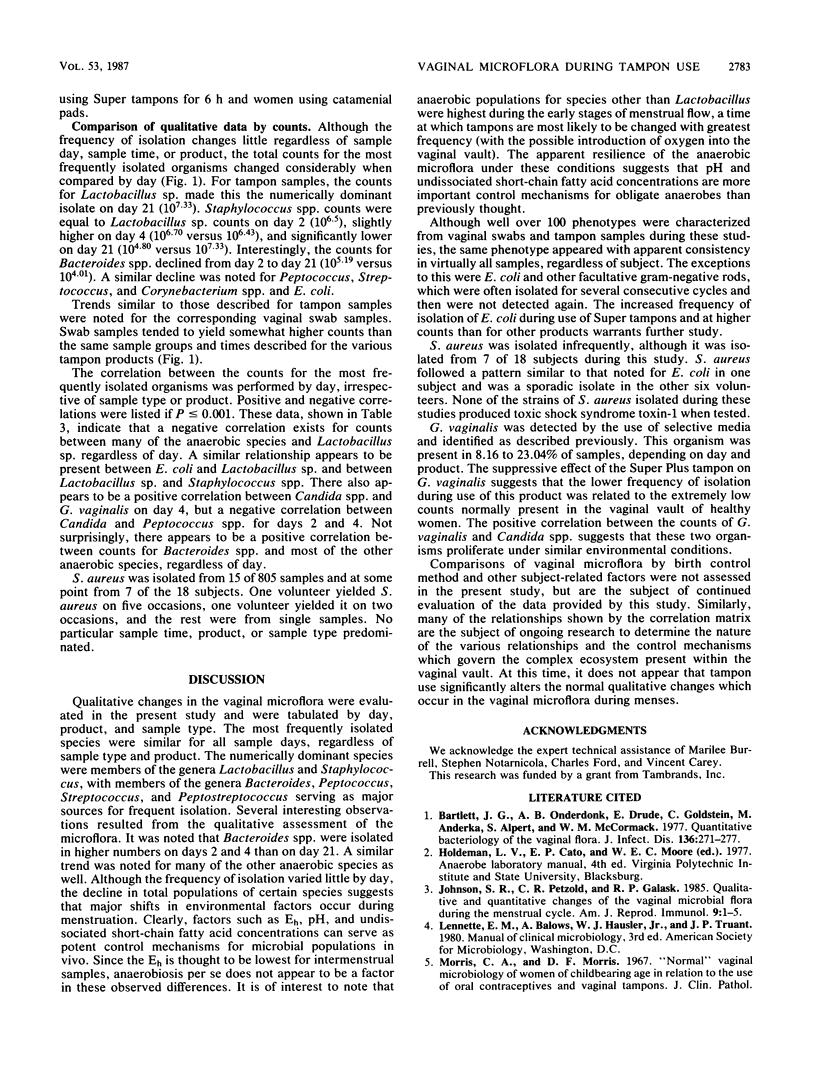
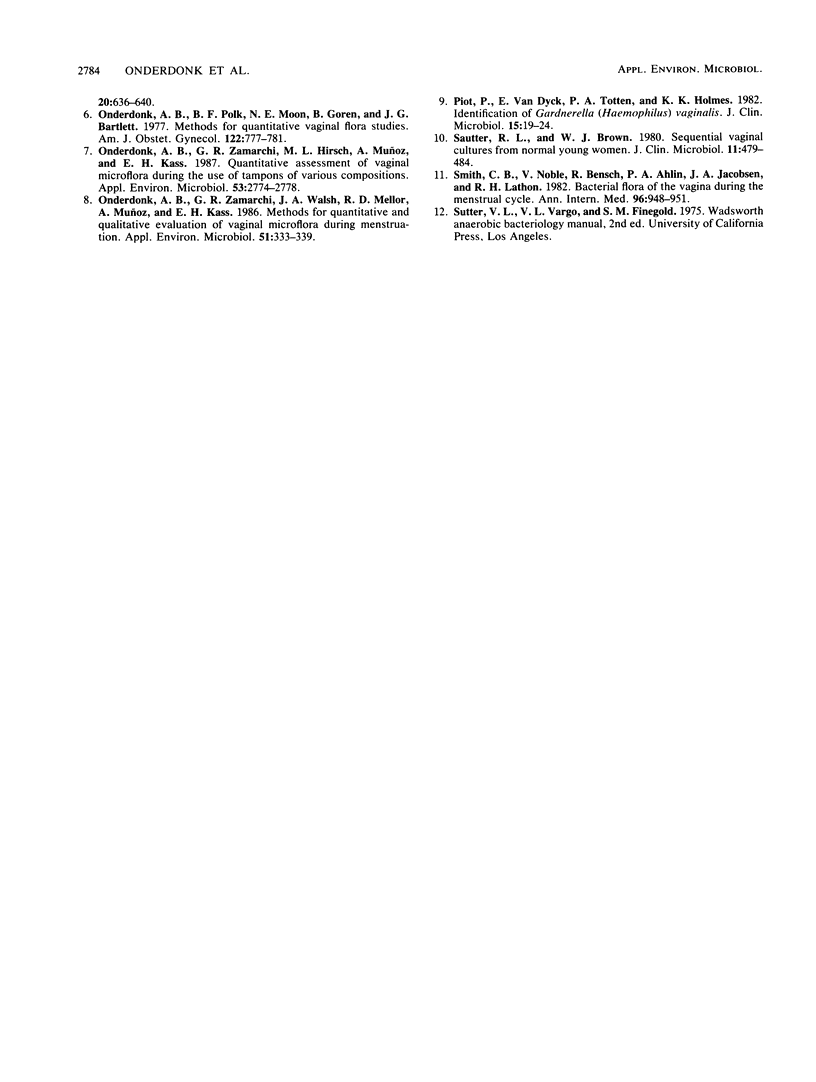
Selected References
These references are in PubMed. This may not be the complete list of references from this article.
- Bartlett J. G., Onderdonk A. B., Drude E., Goldstein C., Anderka M., Alpert S., McCormack W. M. Quantitative bacteriology of the vaginal flora. J Infect Dis. 1977 Aug;136(2):271–277. doi: 10.1093/infdis/136.2.271. [DOI] [PubMed] [Google Scholar]
- Johnson S. R., Petzold C. R., Galask R. P. Qualitative and quantitative changes of the vaginal microbial flora during the menstrual cycle. Am J Reprod Immunol Microbiol. 1985 Sep;9(1):1–5. doi: 10.1111/j.1600-0897.1985.tb00331.x. [DOI] [PubMed] [Google Scholar]
- Onderdonk A. B., Polk B. F., Moon N. E., Goren B., Bartlett J. G. Methods for quantitative vaginal flora studies. Am J Obstet Gynecol. 1977 Aug 1;128(7):777–781. doi: 10.1016/0002-9378(77)90720-7. [DOI] [PubMed] [Google Scholar]
- Onderdonk A. B., Zamarchi G. R., Rodriguez M. L., Hirsch M. L., Muñoz A., Kass E. H. Quantitative assessment of vaginal microflora during use of tampons of various compositions. Appl Environ Microbiol. 1987 Dec;53(12):2774–2778. doi: 10.1128/aem.53.12.2774-2778.1987. [DOI] [PMC free article] [PubMed] [Google Scholar]
- Onderdonk A. B., Zamarchi G. R., Walsh J. A., Mellor R. D., Muñoz A., Kass E. H. Methods for quantitative and qualitative evaluation of vaginal microflora during menstruation. Appl Environ Microbiol. 1986 Feb;51(2):333–339. doi: 10.1128/aem.51.2.333-339.1986. [DOI] [PMC free article] [PubMed] [Google Scholar]
- Piot P., Van Dyck E., Totten P. A., Holmes K. K. Identification of Gardnerella (Haemophilus) vaginalis. J Clin Microbiol. 1982 Jan;15(1):19–24. doi: 10.1128/jcm.15.1.19-24.1982. [DOI] [PMC free article] [PubMed] [Google Scholar]
- Sautter R. L., Brown W. J. Sequential vaginal cultures from normal young women. J Clin Microbiol. 1980 May;11(5):479–484. doi: 10.1128/jcm.11.5.479-484.1980. [DOI] [PMC free article] [PubMed] [Google Scholar]
- Smith C. B., Noble V., Bensch R., Ahlin P. A., Jacobson J. A., Latham R. H. Bacterial flora of the vagina during the menstrual cycle: findings in users of tampons, napkins, and sea sponges. Ann Intern Med. 1982 Jun;96(6 Pt 2):948–951. doi: 10.7326/0003-4819-96-6-948. [DOI] [PubMed] [Google Scholar]


